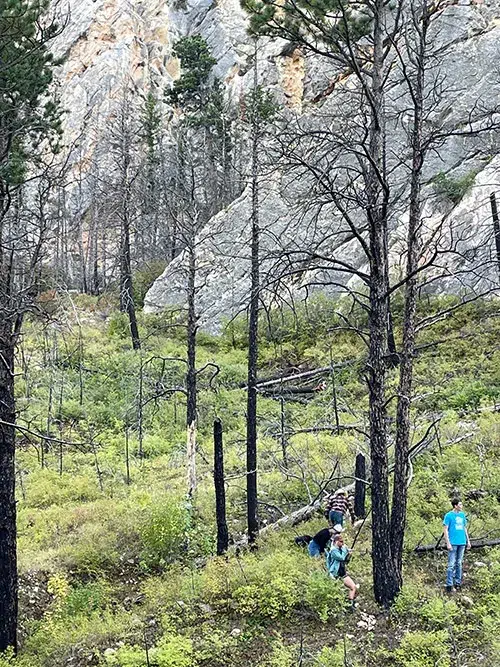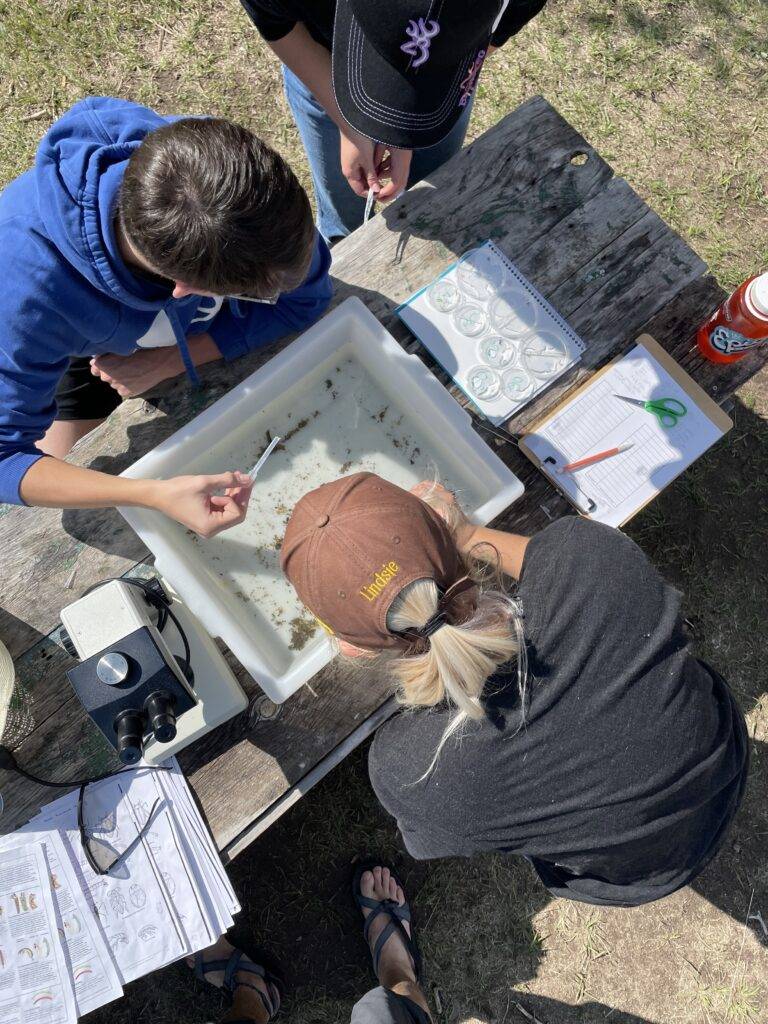Sheridan College’s Intro to Field Ecology class took a field trip to HF Bar Ranch last weekend to collect ecological data related to questions they developed in class. This trip provided opportunities for students to gather samples and data that will be used to study different Wyo. landscapes, habitats, and organisms that will be used throughout the remaining semester. During this trip, the students also learned standard techniques to study and quantify those organisms.

“I have found that taking students out into the field early in the semester to gather data and samples consistent with what we’re studying in the following weeks is a vital aspect of hands-on-learning that keeps the students engaged,” said Scott Newbold, Sheridan College’s Ecology and Biology instructor. “We took samples of trees, pollinators, small mammals, and stream invertebrates to study the life in our beautiful Bighorn Mountains.”
The class explored the diversity of stream invertebrates in pools and riffles on the north fork of Rock Creek, compared to the south fork of Rock Creek. The class hypothesized the streams would differ, given the varied landscapes of the studied areas. During the field trip, the class identified and counted the different organisms which will later be summarized and used to evaluate the class’s original hypotheses.
The class also took tree core samples from Ponderosa Pine trees on the edge of the Gilead fire in Red Canyon. According to Newbold, the class hypothesized that surviving trees would increase tree-ring widths due to the fire that burned neighboring trees ten years ago. Newbold said the question being researched was, “Do the trees show signs of being released from competition for light, water, or other resources?”

“The tree cores allow you to see tree rings from year one to present day in a straw-sized sample, which does not harm the tree,” Newbold said.
Finally, the last of the student’s exploration focused on pollinators. They questioned if the pollinators would differ from around the creek to the pastures. The class set out blue-vane pollinator live traps and checked them after two hours to see what they attracted. According to Newbold, the class found butterflies, leaf-cutter bees, blister beetles, and one unhappy crab spider who thought the trap was a flower.
Newbold says he is thankful for the generosity granted by the HF Bar Ranch.
“Margi Schroth has owned and managed HF Bar Ranch since 1981 and she put a conservation easement on the entire ranch in 2012 through The Nature Conservancy, preserving the lands and landscape in perpetuity,” Newbold said. “We are so grateful to her and her staff for inviting us to explore and use the ranch as our outdoor laboratory.”
The students will observe their samples more closely in the classroom setting to examine tree growth patterns, diversity in stream invertebrates, small mammals, and variation in pollinators.

